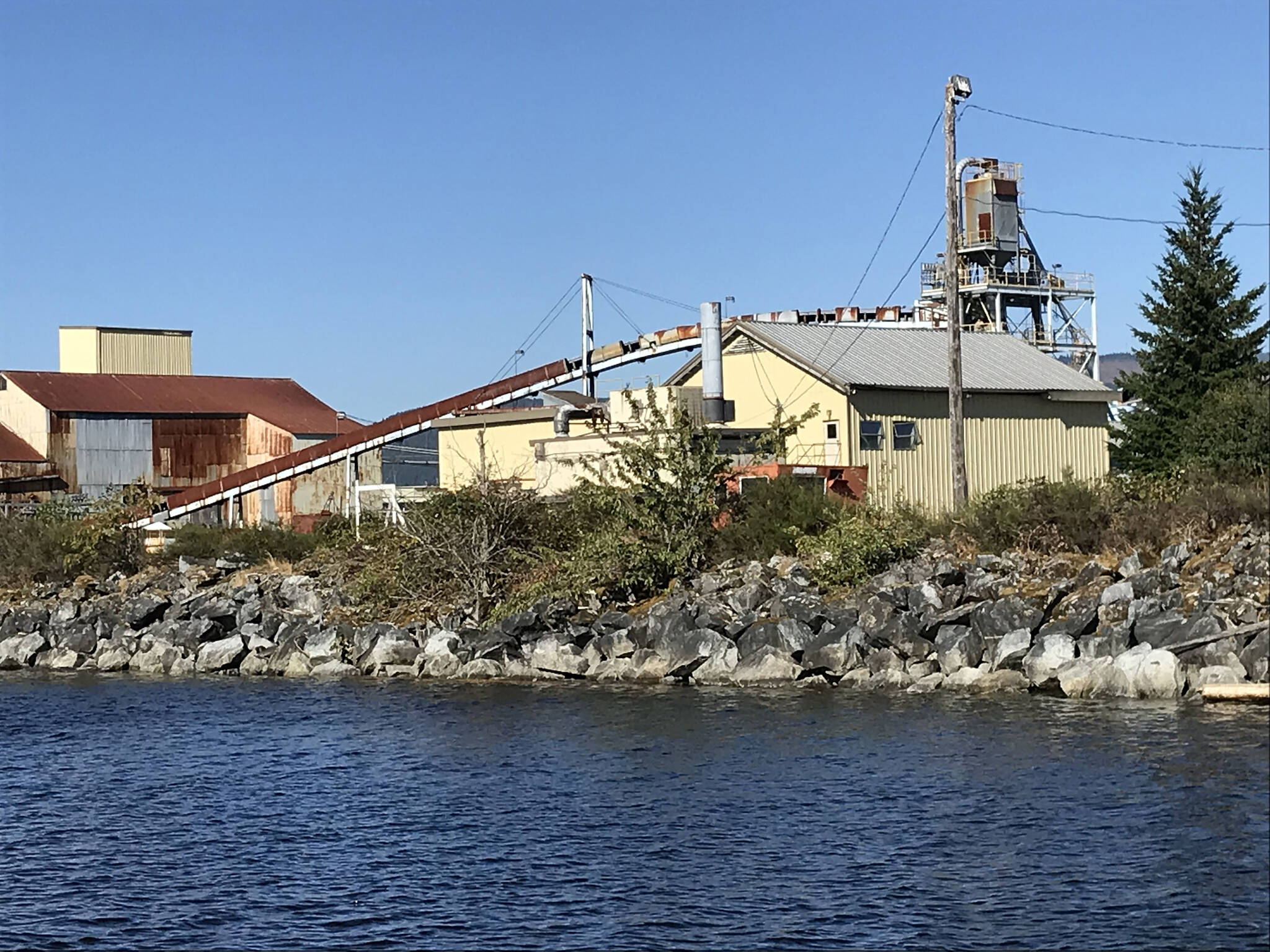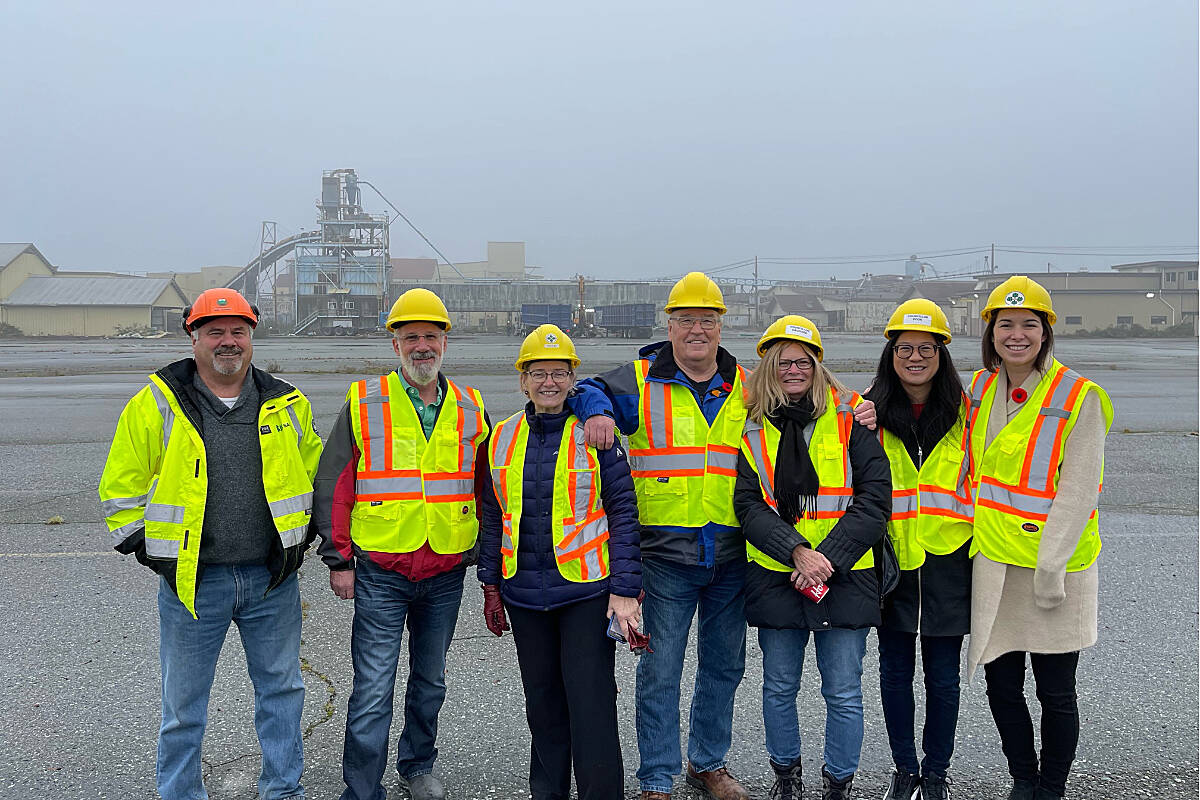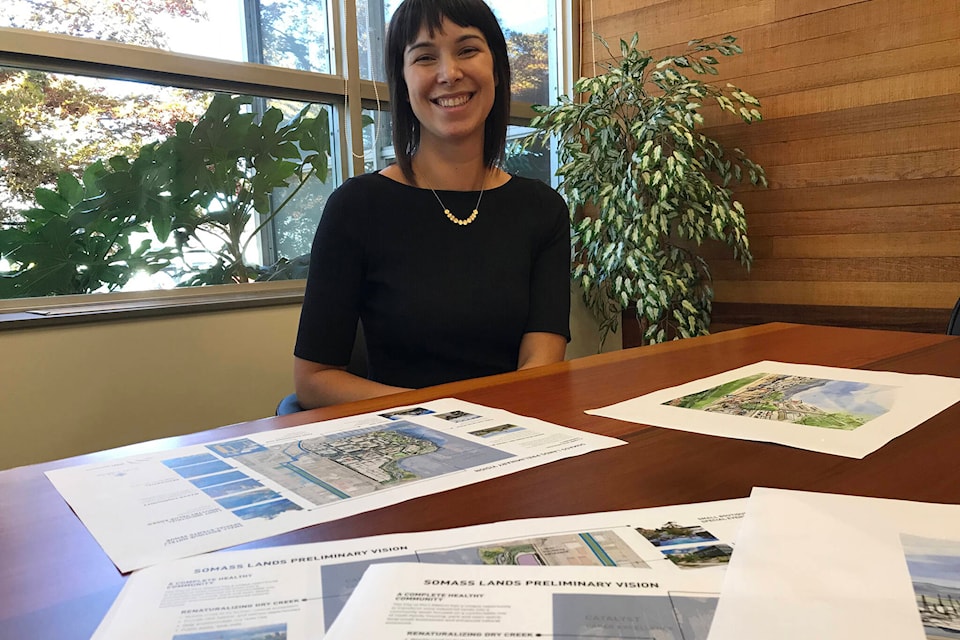Bring up the subject of waterfront property in Port Alberni, and people think of two things: recreational land on Sproat Lake, and heavy industry along Alberni Inlet.
A 43-acre plot of prime waterfront in the heart of the city, known as the Somass lands, is the focal point of opportunity these days. Formerly home to a sawmill for more than 70 years, the mill lay dormant for five years until city leaders decided to reclaim the land.
“That piece of waterfront is why I ran for mayor,” says Sharie Minions, whose first term as mayor will be up in October 2022. There were competing interests over the dormant sawmill from fellow members of council during Minions’ term as a councillor, prompting her to enter the mayoral race in 2018.
“The Somass Sawmill shut down during my term on council. I saw it as an incredible opportunity for the future of the community to really go in a new direction, an intentional direction,” she said.
This present council isn’t the only faction to see value in this particular tract of land. Pre-contact, the Tseshaht claimed a wide swath of the waterfront from down the Alberni Canal all the way up the Somass River to Sproat Lake. Some of the haa huulthi or territory, according to elder Ernie Lauder (as written down by Annie Watts in a history of Tseshaht), was absorbed as “spoils of war” after defeating the yashitkwuu?ath and ts’ooma?as?ath.
A winter village and ceremonial site for Tseshaht First Nation stretched from what is known as Argyle Street along the waterfront. When colonial settlers arrived up the Alberni Inlet, they too saw value in the area and forced the Indigenous population to move further up the Somass River. In the early 1860s, the Anderson Company sawmill replaced ceremonial activities such as the Tlookwaana, or Wolf Ritual, and others that marked the end of the annual salmon runs.
The Tseshaht First Nation will set foot on Wolf Ritual Beach for the first time in a century on June 21 during a re-awakening ceremony.
The land where the former Somass Sawmill sits was a mud-soaked tidal flat until the early 1930s. Great Central Sawmills Ltd. decided to build a new mill just north of the failed Spratt Sawmill. The deepsea nature of the harbour was a draw, and the company wanted a way to ship its product to developing markets overseas. The undeveloped land was also close to the railway.
Truck loads of gravel were brought in to create a berm around the mudflats. They were then dredged in June 1934 to back-fill the dike and reveal the land. “Everything that was built on the property was built on pilings,” said local historian Ken Rutherford. “All the buildings were built on pilings.”
Dry Creek was diverted a couple of times through or around the property for different purposes, he added. The city would eventually like to restore the creek to its original path through the Somass site.
The mill opened in early 1935; it didn’t become “Somass Sawmill” until 1953 after a merger between logging companies.
Rutherford began working at the Somass Sawmill in 1967 and retired after 38 years. He was one of four generations to work at the mill, starting when it opened. “This was the only land that hadn’t been developed where you could put infrastructure on it,” he said of the attraction for the site.
Almost 80 years later, the city’s leaders still see the land as a vital piece of the waterfront.
“Council sees this as a pivotal piece of land,” Minions said. “It’s open space, waterfront access for the community, potential residential” and light industry. There is a shortage of light industrial land on Vancouver Island, making the Somass lands attractive to numerous developers.
Ten months ago Minions, with council firmly behind her, announced the city’s intention to expropriate the property if Western Forest Products wasn’t going to restart the mill.
The mill had been shuttered for five years at that point with no plans in sight to restart it. The two parties reached an agreement, and Western began the process of dismantling the mill. The city formally took over the property in February 2022.
Developing the waterfront has been part of the city’s strategic plan for the past 20 years. For the present council, it has been a defining issue, she said. “Council didn’t make these decisions lightly.” It was a long-term strategic project, and city council went into the process well informed, she added. They are considering next steps, which includes demolishing the old mill and remediating the site to the point of receiving a certificate of compliance.
Roland Smith has been a vocal critic of the city’s plans for a multi-use path connecting Victoria Quay to Harbour Quay, with a waterfront portion ostensibly running across the Somass lands.
Smith criticized the city for buying the land, which immediately halted the annual $500,000 industrial class tax payment the curtailed mill still garnered. Minions said the tax payments were never guaranteed, and would have been significantly less as soon as Western Forest Products permanently shuttered the mill.
“BC Assessment told us as soon as they announced permanent curtailment they would have been reassessed and (the payment) would have gone drastically down,” she said. “That was going to be a loss for us, regardless.”
She said the city has more than made up for the loss in revenue in the 10 months since they announced their intent to buy the land. “If you look at our financial plan for this year, we had a net gain in the industrial class. We did not lose $500,000, it was made up by new development elsewhere.
“We ended up increasing our budget 3.9 percent because we had so much new development this year across all classes, so it was balanced out.”
Looking forward, “the site being redeveloped will pay significantly more than that.”
He calls it an expensive move.
Smith said the city has exposed taxpayers to “potential costly environmental cleanup” at the same time as the tax revenue hit. The city maintains the environmental cleanup bill for the site will only be around one million dollars, and there are numerous skeptics. Minions says the city has environmental reports on the site, but they cannot share some of the information due to a non-disclosure agreement that was a condition of sale.
“We’re not letting vocal negativity stop progress,” she says. “We have to balance that with being leaders that have a strategic plan with a bigger vision for the community.”


